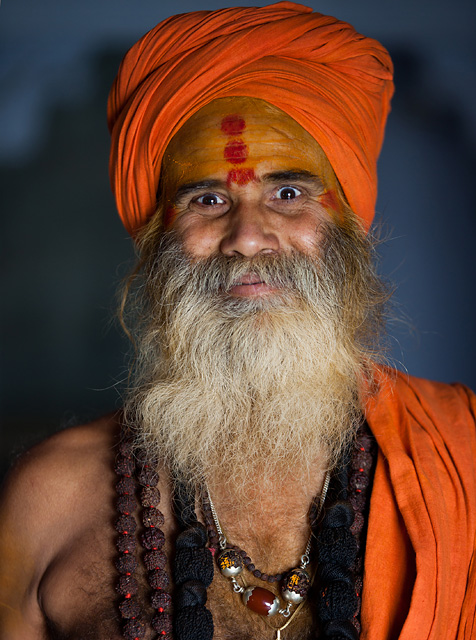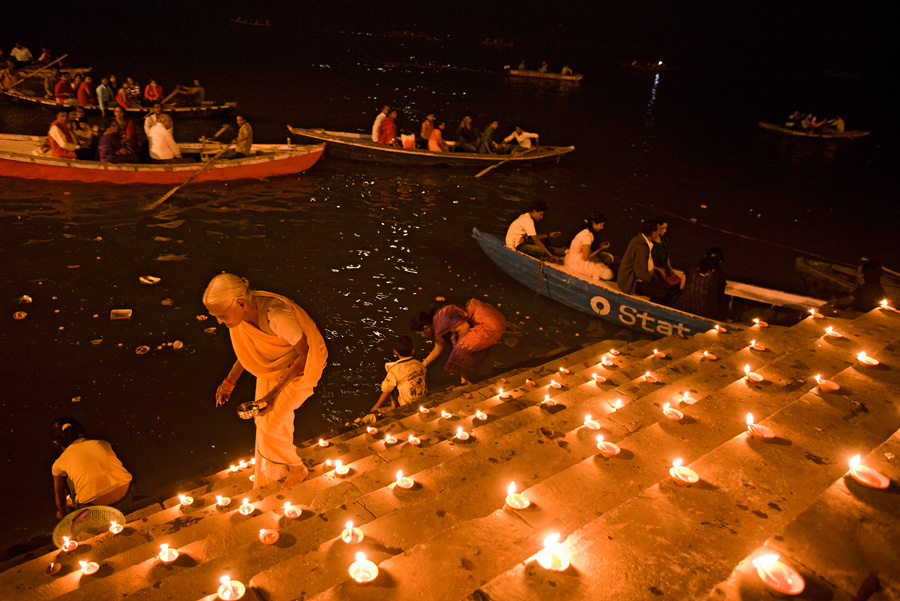This article was written for Terrascape, a travel magazine where I write a monthly column on photography.
One of my long standing wish was to photograph the mendicants in Varanasi. I have been to Varanasi many times in the past, but in all these years, I was apprehensive to approach the sadhus with a camera. I had heard about short-tempered nature of many and was unsure about reaching out to them. I did not wish to photograph people from a distance either. As much as possible, I prefer to make conversations, know about the people I am photographing and keep them comfortable during the shoot. During the last visit, I decided to put my uneasiness aside and make an effort to approach them.

Instead of trying to connect with any mendicant I bump into on the river-front, I planned to meet them at their own residences. Obviously, the first step to doing this was asking permissions. I wasn’t very hopeful with being let in, but decided to try out anyway. To my surprise, the Guruji of one of the largest and well-known river-facing residence of the mendicants gladly consented to our request. Even better, the resident mendicants were happy to oblige to the camera.
I am part of a private community of photography-enthusiasts consisting of people who have travelled with us on photography tours. It is usually abuzz with some interesting images, events or topics of discussion related to photography. In the last week the focus of discussion was on making Black and White images, and the subject of some B&W experiments were images from a recent photography trip to Varanasi. I raised a few thoughts in the discussion, and thought it is worth sharing those points here.

I see a lot of considerations that would have go into making an image BW. Some of them here, according to me –
1. If the colour brings life to an image–it does to many images–it is perhaps best left with colour. Images of shining earthen lamps that create a warm glow, for example..
2. If the colour is a distraction–it often can be in intense portraits and many other situations–perhaps it is best to get rid of it.
3. In many occasions, colour images loose the shine in high-contrast or challenging lighting situations. But as luck would have it, these are situations that work very well for BW images.
4. Making BW is not just desaturating. It requires very careful consideration of available tonalities, colour channels and contrast and subsequently identifying and enhancing the subject/story. A BW image can be really brought to life with good quality processing. And this is the reason why most professionals during BW film days used to develop their own images, to have full control over final results.
And most importantly, it is worth planning your shoot with the end in mind (that is, final processed BW/colour image). This is something that even Ansel Adams had proposed strongly (in shooting BW film).
Come winter, I look forward to travelling to Varanasi on the occasion of Dev Diwali. A festival not to be confused with Diwali, this is celebrated two weeks after Diwali, more commonly called Karthika Poornima festival in many parts of the country.

A lady lighting the lamps on the ghats during Dev Diwali in Varanasi
On the evening of Dev Diwali, the three-kilometer long ghats–steps leading to Ganga–are all lit with thousands of small earthen oil lamps. The entire stretch appears as though stars have arrived on earth for an excursion. It’s believed that the entire pantheon of ghats descend on earth for a dip in Ganga on this day. Pilgrims too arrive in the ghats in large numbers on the occasion of Dev Diwali, and Panchganga Ghat becomes the most favoured bathing place for the day.
The above photograph was made during this year’s Dev Diwali, which was two weeks ago, when I was leading a photography tour in Varanasi.


